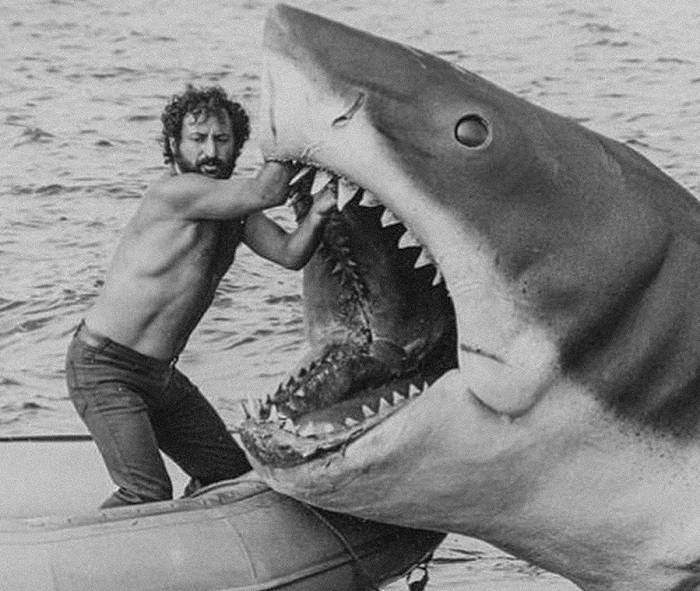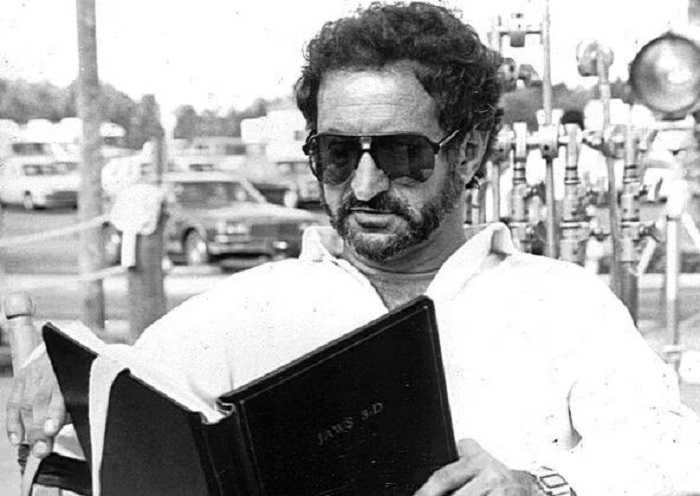By Drew Turney
It’s been fifty years since we first heard the iconic bass drift up from the deep. Jaws production designer Joe Alves talks about the hands-on production of the first blockbuster that almost never was.
We don’t often consider the movie that levelled Old Hollywood and changed everything an independent project. Even though it was bankrolled by Universal, veteran production designer Joe Alves remembers a distinctly hands-on production.
“I did a little bit of everything,” he says. “I did early sketches from the book before we had the script, researched the shark and did the initial clay model. We had no real art department so I found the engineer and draftsmen to work on the details and a sculptor to do a full-sized model. I even went off and scouted locations by myself. It was a pretty small operation and Steven wasn’t even sure if he was going to do the movie at first.”

Jaws not only heralded a new way of marketing movies, but it foresaw the modern standards of outsourcing almost every aspect of production except pointing a camera at actors. Back in the mid ‘70s, studios were the production houses from start to finish, and Universal had no room for a silly movie about a killer shark.
“Everything was in-house, from the effects to the art department,” Alves says, “but the studio said they couldn’t do it at the time; they were working on The Hindenberg and Earthquake. So the head of production said to me ‘If you think you can do it, take it off the lot and find people who can do it’.”

But in perhaps the most ironic twist after Jaws changed the moviemaking process so completely, it wouldn’t even be made the same way itself nowadays. Adds Alves – possibly a little sadly – “A producer asked me what you’d need to make Jaws today. We’d probably only need a boat and some water because they’d computerise the whole thing. Even the shark eating Quint would probably be done in CGI – including Quint’s body.”
Did the cast and crew think they were onto something big? “A few of us had a tremendous feeling about it,” Alves says, “but there was a lot of negativity as well, from the studio and even some of the actors. Richard Dreyfuss thought it would be a disaster, for instance. But we were most afraid that the audience would just laugh. When you’re on set it wasn’t scary at all – it sounded like a bunch of pneumatic rams and cylinders. Even the crew were laughing at it, so it wasn’t until it was mastered and edited that we realised – the audience went crazy.”
For much, much more on Jaws, check out Antonia Quirke’s book-length appraisal of the film as published by BFI Classics and Bloomsbury. Click here for more information.





